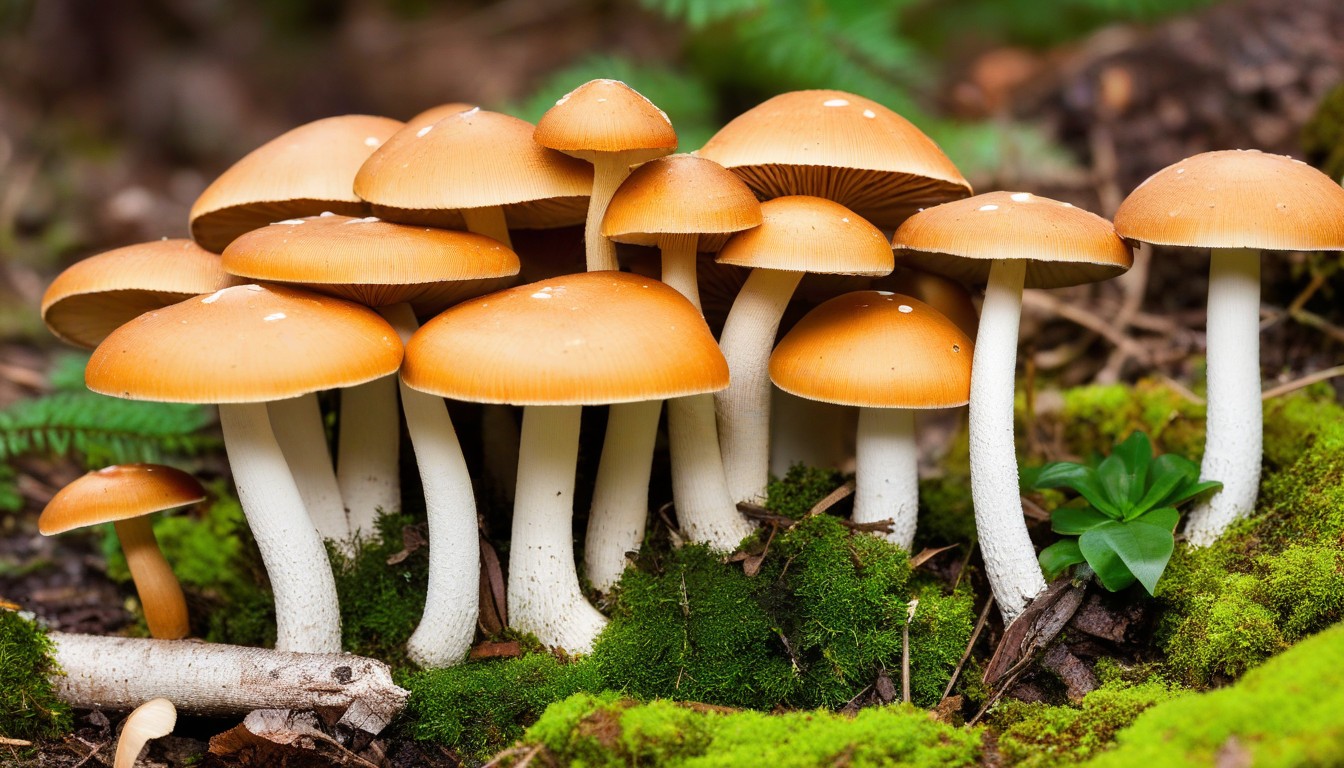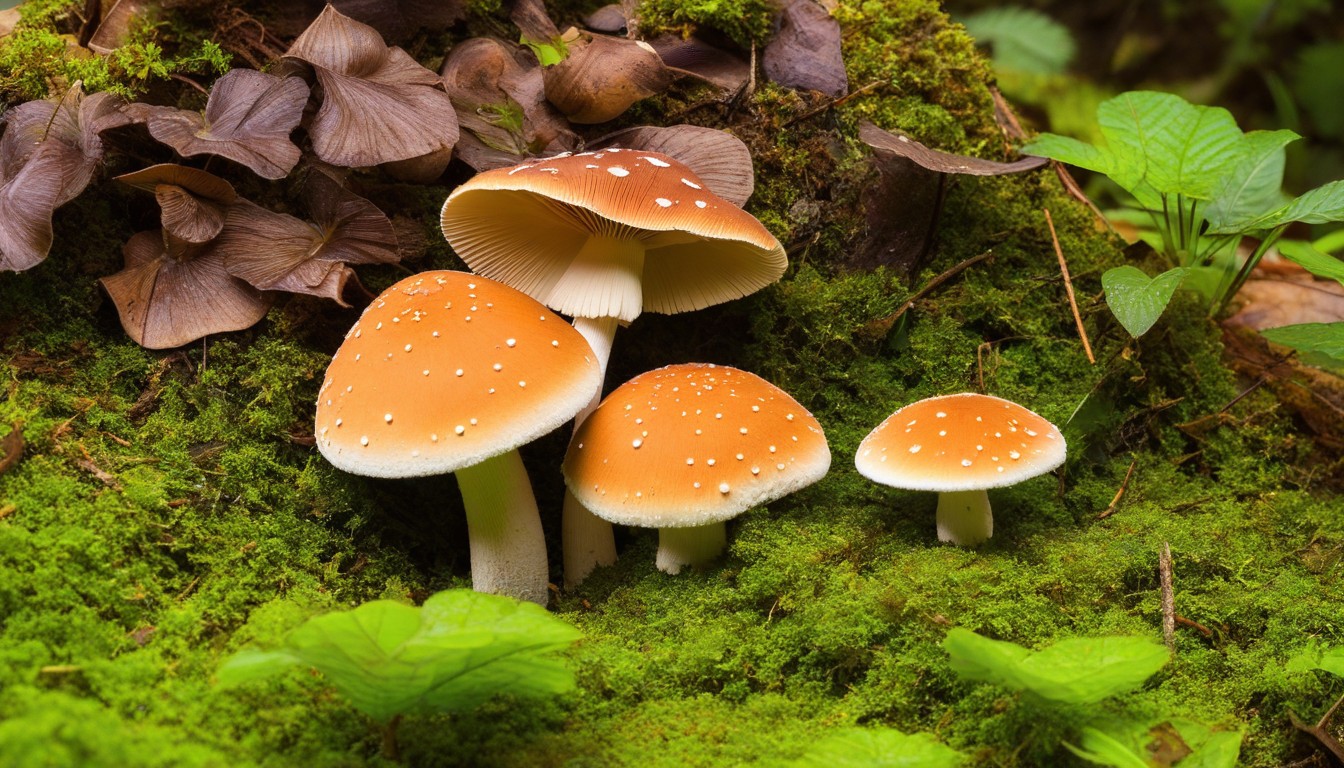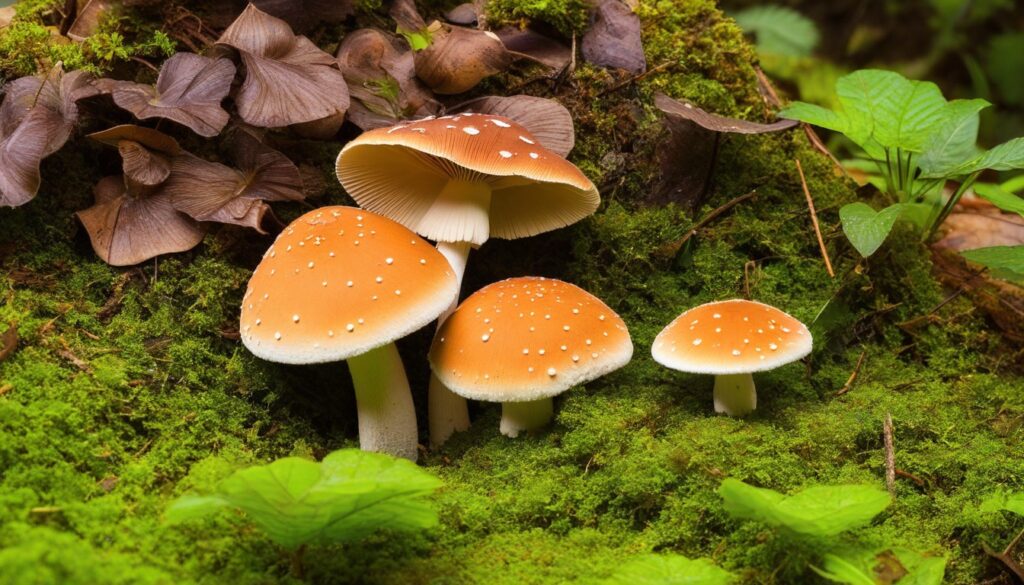Welcome to our guide on how to make substrate for mushrooms in the comfort of your own home. Growing mushrooms is not only a fun and rewarding activity, but it can also provide you with a fresh and delicious source of food. With our easy-to-follow instructions, you’ll be able to create the perfect environment for cultivating mushrooms and unleash your inner mycologist.
Key Takeaways
- Making substrate for mushrooms at home is a rewarding and fulfilling process.
- Creating an optimal environment for mushroom cultivation requires choosing the right substrate, gathering the necessary ingredients, preparing the substrate properly, and providing the ideal growing environment.
- By following our simple guide, you’ll be able to grow your own fresh and delicious mushrooms.
Introduction to Mushroom Substrate
Before we delve into the process of making substrate, let’s first understand what mushroom substrate is. Mushroom substrate refers to the material on which mushrooms grow. It provides the necessary nutrients and support for the mushrooms to thrive. Different types of mushrooms require different substrates, and understanding the specific requirements is key to successful cultivation.
Choosing the Right Substrate for Your Mushroom
In order to successfully cultivate mushrooms at home, it’s essential to choose the appropriate substrate. Different types of mushrooms thrive on different substrates, and selecting the wrong one can result in poor, if any, harvest.
When it comes to selecting a substrate for your mushroom cultivation project, consider the following:
- Mushroom species: Identify the type of mushroom that you want to grow. Some popular mushroom species for home cultivation include oyster, shiitake, and lion’s mane.
- Availability: Some substrates may be more readily available in your area than others. Consider where you can source your substrate ingredients.
- Cost: Some substrates may be more expensive than others, so consider your budget when choosing.
- Difficulty level: Some substrates may require more advanced skills or equipment to prepare and maintain. Consider your experience level and available resources.
Here are some common substrates and the types of mushrooms they are suitable for:
Substrate | Mushroom Species |
|---|---|
Straw | Oyster, shiitake, and lion’s mane |
Sawdust | Oyster, shiitake, and lion’s mane |
Coffee grounds | Oyster and shiitake |
Coco coir | Oyster and shiitake |
Keep in mind that these are just a few examples, and there are many other substrates and mushroom species to choose from. Research, experiment, and have fun selecting and testing different combinations of substrate and mushroom species until you find the perfect match.
Gathering the Ingredients
Before making the substrate, it’s important to gather all the necessary ingredients. Here’s a detailed list of what you’ll need:
Ingredient | Amount |
|---|---|
Straw | 5 pounds |
Manure | 5 pounds |
Vermiculite | 2.5 pounds |
Brown rice flour | 2 cups |
Water | Enough to hydrate mixture |
Make sure to source high-quality ingredients to ensure the best results. For example, choose organic straw and manure without any added chemicals.
It’s also important to keep in mind that different types of mushrooms may require different ingredients or proportions. For instance, if you plan to grow oyster mushrooms, you may want to add soybean powder to the mixture.
With these ingredients, you’ll be on your way to making the perfect substrate for your mushroom cultivation. In the next section, we’ll walk you through the process of preparing the substrate.
Preparing the Substrate

Now that you have gathered all the necessary ingredients, it’s time to prepare the substrate for mushroom cultivation. This process involves cleaning, sterilizing, and mixing the ingredients to create an optimal environment for the mycelium to thrive.
Cleaning the Ingredients
The first step in preparing the substrate is to clean the ingredients. If you are using straw, for example, remove any debris, dust, or seeds that might interfere with the growth of the mycelium. If you are using sawdust, make sure it’s free of contaminants and mold.
Sterilizing the Substrate
Mushroom cultivation is highly susceptible to contamination, which can ruin your substrate and hinder the growth of the mycelium. Therefore, you need to sterilize the substrate to eliminate any unwanted bacteria or fungi that might compete with the mycelium for nutrients. This can be done by using a pressure cooker or by baking the substrate in the oven.
Mixing the Ingredients
After cleaning and sterilizing the ingredients, it’s time to mix them to create the substrate. The ratio of the ingredients will depend on the type of mushroom you want to grow and the substrate you are using. For example:
Substrate | Ingredients |
|---|---|
Straw | 2 parts straw, 1 part vermiculite |
Sawdust | 5 parts sawdust, 2 parts bran, 1 part gypsum |
Coffee Grounds | 4 parts coffee grounds, 1 part vermiculite, 1 part gypsum |
Once you have mixed the ingredients, you’ll want to hydrate the substrate to the proper moisture level. This can be achieved by adding water to the substrate until it feels like a damp sponge. Then, it’s time to pasteurize the substrate, which involves heating it to a specific temperature for a certain amount of time to kill off any remaining bacteria or fungi. This process is different from sterilization, as it aims to create an environment where the mycelium can thrive without being impeded by competition from other microorganisms.
By following these steps, you’ll be able to prepare the perfect substrate for mushroom cultivation, setting yourself up for a successful growing experience.
Inoculating the Substrate
Inoculating the substrate is a critical step in the mushroom cultivation process. It involves introducing mushroom spores or spawn into the substrate mixture to promote mycelium growth and eventually, the development of mushrooms. There are several methods for inoculating substrate, but the goal is to ensure that the spores or spawn are evenly distributed throughout the mixture.
One method for inoculating substrate is to use pre-made spawn, which is a substrate that has already been colonized with mushroom mycelium. This method is faster than starting from spores, but it can be more expensive and may limit the variety of mushrooms you can grow.
Starting from spores is another option for inoculating substrate. To do this, you’ll need to obtain mushroom spores and use them to create your own spawn. This method is more time-consuming, but it allows for a greater variety of mushroom types to be grown.
Regardless of the inoculation method you choose, it’s important to maintain a sterile environment during the process. Any contaminants can negatively affect the growth of the mycelium and the eventual yield of the mushrooms.
Expert tip: When using pre-made spawn, be sure to break it up into smaller pieces to ensure even distribution throughout the substrate mixture.
Managing the Growing Environment

Creating the optimal growing environment is essential for a successful mushroom cultivation process. Here are some tips for managing the mushroom growing environment:
- Temperature: Different types of mushrooms have different temperature requirements. Generally, temperatures between 60-75°F are ideal for mushroom growth. Using a thermometer to monitor the temperature is recommended.
- Humidity: Mushrooms need a humid environment to grow properly. Keeping the humidity level between 70-90% is recommended. A humidifier or regular misting can help maintain the right humidity levels.
- Ventilation: Proper ventilation is crucial to avoid the buildup of carbon dioxide and other harmful gases. Fresh air exchange can be achieved by opening windows or using a fan.
Pro tip: Using a hygrometer to monitor the humidity level and a carbon dioxide detector to ensure sufficient ventilation can help maintain optimal growing conditions.
Additionally, consider the location of the mushroom growing environment. It should be in a clean and well-ventilated area away from direct sunlight and drafts. A closet or unused room can be a good option.
Remember to regularly monitor and adjust the growing environment as needed to ensure the mushrooms grow healthy and abundant.
Caring for the Mushroom Substrate

After inoculating the substrate, it’s important to care for it properly to ensure successful mushroom cultivation. Here are some key tips to keep in mind:
- Monitor moisture levels: The substrate should be kept moist, but not too wet, as excess moisture can lead to bacterial or fungal contamination. Check the moisture level regularly, and if it feels dry, mist it lightly with water.
- Protect from contamination: Contamination is a common challenge in mushroom cultivation. Keep the growing area clean and sanitize your hands and tools before handling the substrate. If you notice any signs of contamination, remove the affected area immediately and adjust your growing conditions as needed.
- Provide adequate light: While mushrooms don’t need direct sunlight, they do require some light to grow. Place your growing containers in a room with natural light or provide artificial light on a timer to simulate a day/night cycle.
It’s also important to keep an eye on the overall health of the substrate. If you notice any discoloration, unusual smells, or uneven growth patterns, take action immediately to address the issue.
By caring for your mushroom substrate properly, you can increase your chances of a successful harvest. Remember to maintain moisture levels, protect from contamination, provide adequate light, and monitor overall health.
Conclusion:
That’s all there is to it! Making substrate for mushrooms at home is an enjoyable and rewarding experience. By following the steps outlined in this guide, you’ll be able to create an ideal environment for your mushrooms to grow and thrive. Remember to choose the right substrate, gather the necessary ingredients, prepare the substrate properly, and provide the ideal growing conditions.
Happy Mushroom Cultivation!
With a little patience and attention to detail, you’ll soon be enjoying delicious, homegrown mushrooms right from your own backyard. Share your success stories with your friends and family and inspire them to try their hand at mushroom cultivation. Who knows, you may even start your small-scale mushroom farming business!
FAQ
What is mushroom substrate?
Mushroom substrate refers to the material on which mushrooms grow. It provides the necessary nutrients and support for the mushrooms to thrive.
How do I choose the right substrate for my mushrooms?
Different types of mushrooms require different substrates. It’s important to understand the specific requirements of the mushrooms you want to grow in order to choose the right substrate.
What are some common substrates for mushroom cultivation?
Common substrates include straw, sawdust, and coffee grounds. Each has its own pros and cons, which should be considered when choosing a substrate.
What ingredients do I need to make mushroom substrate?
The ingredients needed to make mushroom substrate will vary depending on the type of substrate you choose. It’s important to gather all the necessary materials and ingredients before starting the process.
How do I prepare the substrate for mushroom cultivation?
Preparation involves cleaning, sterilizing, and mixing the ingredients of the substrate. It’s important to follow a step-by-step process to ensure the substrate is properly hydrated and pasteurized.
How do I inoculate the substrate with mushroom spores?
Inoculation is the process of introducing mushroom spores or spawn into the substrate. Different methods can be used, such as using pre-made spawn or starting from spores. It’s important to maintain proper humidity and temperature control during this process.
How do I manage the growing environment for mushrooms?
Maintaining optimal temperature, humidity, and ventilation is crucial for successful mushroom cultivation. It’s important to create the right growing environment and address any challenges that may arise.
How do I care for the mushroom substrate?
Proper care after inoculation is important for the mycelium to colonize the substrate and produce mushrooms. This includes maintaining moisture levels, protecting the substrate from contamination, and providing adequate light conditions.
Any final tips for making mushroom substrate at home?
Remember to choose the right substrate, gather all the necessary ingredients, properly prepare the substrate, and create the ideal growing environment. Happy mushroom cultivation!

